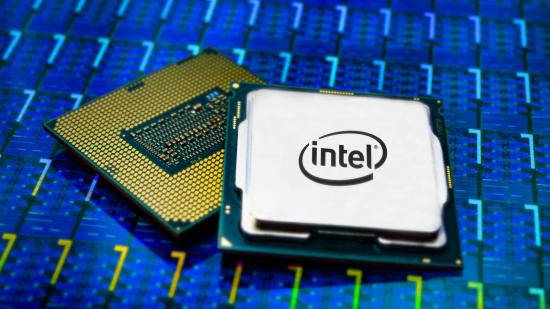AMD’s Renoir platform, hosting Ryzen 4000-series mobile APUs (accelerated processing units), is expected to launch sometime over the coming month. These Ryzen 4000 APUs will power many mainstream gaming and professional laptops, but they’ll also provide low power options for lighter workloads. Recently leaked slides, supposedly from Intel, compare a high-end Renoir laptop with a high-end Intel Core-H laptop.
The leaked slide in question, tweeted by prolific hardware leaker Rogame, compares an Intel Core i7-10750H-based system to an AMD Ryzen 9 4900HS system in a number of games. The problem that many people have now picked up on, however, is that the two laptops are wildly different from one another.
The Intel system is packaged in an MSI GL65 laptop with an Nvidia RTX 2060, whereas the AMD system is packaged in an Asus ROG Zephyrus G14 laptop with an Nvidia RTX 2060 Max-Q. As VideoCardz points out, “the G14 is a 14-inch laptop featuring both power-limited CPU and GPU”, as opposed to the GL65 which does not.
Intel’s claim on the leaked side is that the “Intel Core i7-10750H-based system offers better gaming performance than top bin AMD Ryzen 9 4900HS-based system across a wide selection of AAA games (measured at ultra settings) for a lower price”. The frame rate comparisons list between 18% and 23% improvements in Intel’s performance over AMD in Assassin’s Creed: Odyssey, F1 2019, Hitman 2, Far Cry 5, Total War: Three Kingdoms, and Tom Clancy’s Rainbow Six Siege.
Want to see something funny ??
Intel is comparing :
MSI GL65 Leopard
> i7-10750H
> RTX 2060 Refresh 90W 1005MHz base 1560MHz boost
>15.6" laptop 27.5mm thickvs
Asus Zephyrus G14
> R9 4900HS
> RTX 2060 MaxQ 65W 975MHz base 1185MHz boost
> 14" laptop with 22.2mm thick pic.twitter.com/RbpBGi5A3I— _rogame (@_rogame) June 22, 2020
Analysis: it’s not a fair comparison
However, comparing frame rates in largely incomparable systems doesn’t seem quite fair. Nvidia’s RTX Max-Q GPUs run on less power and are slower than their standard RTX counterparts. The RTX 2060 Max-Q is a 65W part with a 975MHz base clock and 1,185MHz boost clock. The RTX 2060 Refresh (for laptops) is a 90W part with a 1,005MHz base clock and 1,560MHz boost clock.
These Max-Q GPUs are designed for thin and light laptops not running on max power, just like the Zephyrus G14 that holds the AMD system in question. And as for the CPU, the 4900HS itself is a low-power variant of the high-power 4900H, specifically designed for the G14’s thin form factor. The G14 is 22.2mm thick, and the GL65 is 27.5mm thick. That the G14 is thinner means it will also have less room for the kind of large heatsinks and cooling fans that would allow the CPU and GPU to really tear through games.
If this leaked slide is legit, then, it isn’t any wonder why some people feel Intel’s trying to pull the wool over our eyes by comparing two completely different kinds of system to prove its own CPU’s gaming superiority. There are other, better-matched AMD systems that could have been used for comparison, but in a fair test like that would the results have been what Intel wanted? I suppose we’ll only find out once these next-gen laptops hit the market in force and are available for widespread testing.
